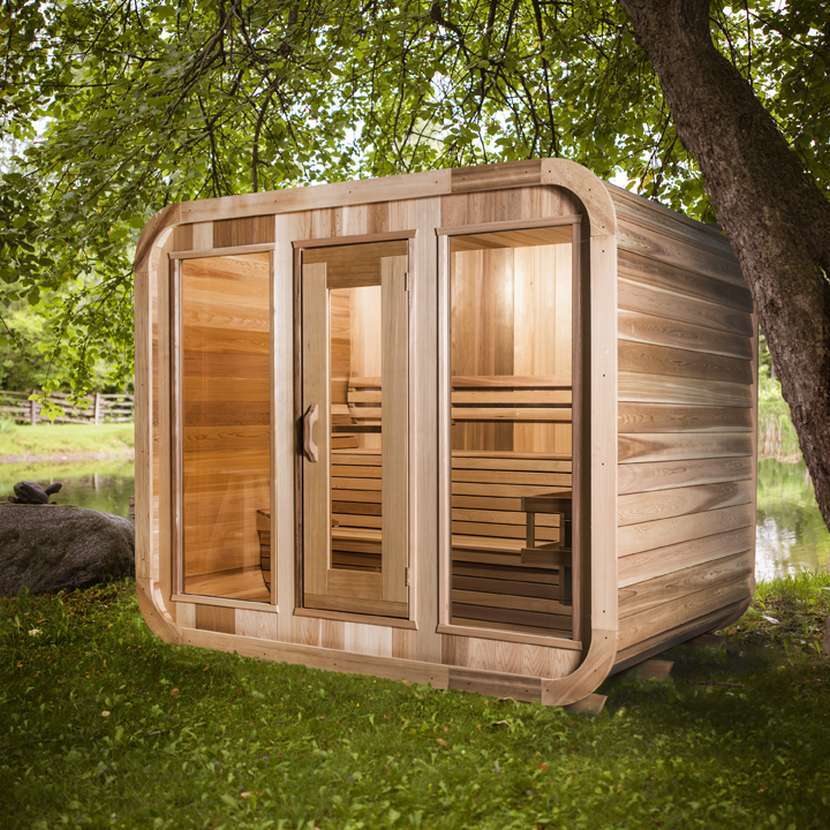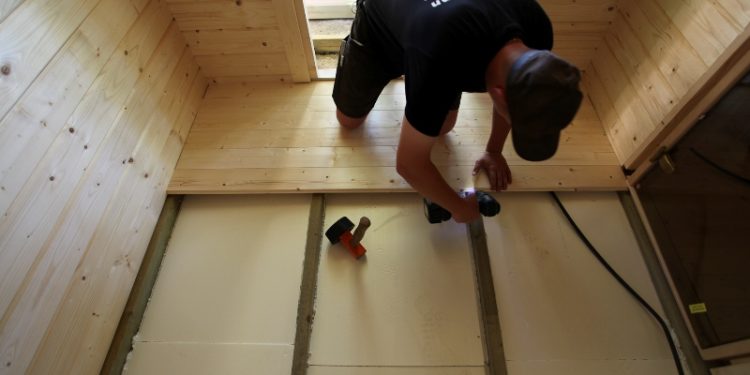For many wellness lovers, having your sauna on the property is the absolute “non plus ultra”. But before you can relax, sweat and strengthen your immune system, it is important to pay attention to a few factors.
High quality and healthy saunas, in the context of which, of course, value is placed on the costs of operating the sauna, starts even before the actual construction. Among other things, the keyword “sauna insulation” plays a decisive role here. Sure: especially about the construction of an outdoor sauna, it can otherwise be difficult to keep the warmth or heat inside. Anyone who compromises here inevitably increases their power consumption, as the furnace has to work harder to ensure temperatures above 80 ° C.
So: regardless of whether you opt for a classic sauna model or a modern barrel sauna, reliable thermal insulation is the be- all and end-all. But what is it that makes sauna insulation like this? How can the heat storage capacity be increased? And what role do individual factors such as wall thickness and Co. play?
Basic rules for sauna insulation
A reliable sauna insulation is about the construction of saunas least as important as the search for the matching favourite brew. Among other things, it is important to ensure that the material used…:
- Is not toxic (and therefore harmful to health)
- Is temperature or heat resistant
- Can repel water.
How tight the sauna insulation has to be in each case depends on the planned average temperatures and your sauna preferences. The wood from which the sauna room was built is also a decisive factor.
The most popular variants of sauna insulation and their specific characteristics are presented below.
The sauna insulation with cork
The advantage of cork in connection with reliable sauna insulation is the fact that the material reacts very well to contact with moisture and at the same time is even able to insulate sound. With cork you not only provide a sauna wall that keeps warmth inside, but also protect yourself against noise from outside. The material does not catch fire too easily. Nevertheless, it must also be noted that there are more environmentally friendly variants than cork for thermal insulation.
In addition, cork has a very individual smell to which many sauna fans still have to get used to.
Incidentally, the cork insulation is divided into further degrees of strength. Here it is worthwhile to compare the different variants with one another.
The sauna insulation with hemp
If you are looking for a more environmentally friendly variant for your sauna insulation, you should look around in the “Hemp” section. The hemp plant grows back and also offers its users reliable thermal conductivity. About flammability, however, there are sometimes significant differences.
The sauna insulation with mineral rock wool
Mineral rock wool is largely composed of many rock wool fibres. The special feature of this material is the fact that it is extremely heat-resistant and even to be able to withstand temperatures of up to 1000 ° C . In addition, mineral stone wool is neither toxic nor harmful to health in any other respect. Nevertheless, always make sure to avoid skin contact with the material. Many people react to this with an uncomfortable itch.
So if you build the wool yourself, it is important to wear suitable gloves. The mineral rock wool is also offered in different thicknesses.
Why is sauna insulation so important?
When choosing the right insulation protection for a garden sauna or an indoor sauna, it is not about upgrading your wellness area with a “luxury accessory”. Rather, reliable insulation is an irreplaceable standard that no sauna owner should do without.

The effects can be seen, among other things, in the areas…:
- Electricity or energy consumption
- Heating-up time
However, the insulation does not affect the ultimate lifespan of the sauna cabin. This depends on many other factors, including appropriate care.
It is also always important to ensure that you do not experiment with “insulating material”, but only to choose high-quality, approved materials. Otherwise there is a high risk of ignition. In addition, it must be ensured that the small parts of the fibre insulation materials used do not get into the air.
However, installing the appropriate materials is not rocket science. If you use the right articles and follow the rules, you are usually on the safe side.
Conclusion – which sauna insulation is the best solution?
The fact is that no sauna, regardless of whether it is indoors or outdoors, can do without reliable insulation. Nowadays, insulation is offered in many different variants and can often also be broken down into the corresponding material thicknesses.
Each material offers the user its advantages. Which variant you choose exactly depends, among other things, on the respective wall thickness. Especially when you have decided to take the sauna construction into your own hands, it is important to find out enough about the “perfect” insulation to ultimately reduce the power consumption of your outdoor sauna.






